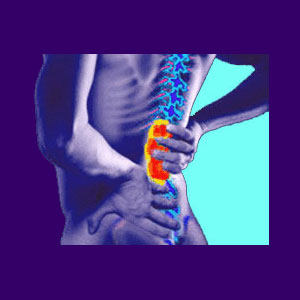
Finding effective and lasting relief from facet syndrome is the primary goal of any patient who is diagnosed with mechanical back pain due to zygapophysial joint degeneration. While it is normal and expected for the arthritic processes to affect the facet joints to one degree or another, some poor patients end up with problematic osteophytes which may cause significant pain in rare instances. Other cases of facet joint pain are not diagnosed as a result of bone spurs; but instead are theorized to involve compression of the small nerves serving the area.
In either case, pain should be localized and almost always related to movement of the specific region of the back or neck. Facet syndrome diagnoses that involve wide-ranging symptoms, or symptoms that are experienced off the direct center of the spine, are virtually always misdiagnosed. The facet joints are key structures that are involved with linking the vertebrae to one another, as well as providing structural strength and stability to the entire vertebral column. Unfortunately, many other possible causes of back or neck pain present similar clinical symptomologies to facet joint syndrome, making diagnosis a challenging and imperfect science.
This essay examines how patients with confirmed facet syndrome can find symptomatic relief, and possibly even lasting cures, using targeted therapy options.
Nonsurgical Relief from Facet Syndrome
Unfortunately, short of surgery, there is little which can be done to permanently relieve actual cases of facet syndrome enacted by bone spurs. However, with time and movement, these problematic osteophytes may wear down on their own, eventually becoming asymptomatic. That being said, this can be a long and terribly painful processes for any patient to endure.
Many osteophyte patients are treated with physical therapy, which can be excruciating and mostly unproductive. However, many insurance plans require an exhaustion of conservative care prior to authorizing coverage for surgical intervention.
Pharmaceutical treatment is commonplace, but demonstrates sizeable risks, since the drugs must be utilized long-term.
Spinal injections are often administered into symptomatic facet joints. These shots typically contain anti-inflammatory agents and long lasting anesthetics, such as Lidocaine. These injections can be effective in some instances, allowing the patient to avoid surgery for the time being. It must be noted that these injections do demonstrate risk factors and only offer a temporary fix, at best. Many patients enjoy no relief from facet injections.
Surgical Relief from Facet Joint Syndrome
There is good news for patients with verified structural pain that is caused by facet joint osteophytes. New minimally-invasive surgical procedures can cure many instances of facet joint pain forever. Laser spine surgery is one of the best options for removing bone spurs which may create the distinctive mechanical back pain issues which are so typical of actual facet joint complaints.
Unlike most forms of spine surgery, facet-specific procedures do little to disrupt the anatomy of the back, since they treat a very limited area. These approaches to care do not require muscular dissection, so the surgical wounds should heal quickly and without high risk of complication. However, there are always risks to consider and any spinal surgery does demonstrate significant possibilities for negative postoperative health consequences. Be sure to discuss the potential downsides of any facet joint surgery prior to considering if this path is right for you.
If the pain is not mechanical and back pain exists all the time, surgery is unlikely to provide relief from facet syndrome, since the osteophytes are likely to be coincidental to the pain experienced. In these cases, facet syndrome might act as a classic back pain scapegoat condition.
Relief from Facet Syndrome Guide
The following points must be made clear to anyone who has been diagnosed with facet degeneration or suspects it as a possible cause for chronic back pain:
First off, facet joint arthropathy is normal to a mild or moderate degree. Bone spur formation is typical as we age and the presence of osteophytes on the vertebral bodies or facet joints is not inherently painful.
Second, in order for a bone spur to enact pain in the facet structures, it must be preventing proper and normal movement of the joint. Many osteophytes are not located in areas where this is even a concern.
Last, if the pain exists regardless of movement, or exists outside the affected location of the spurring, then the true causation is not likely to be sourced by facet joint syndrome.
Be sure to consider all these guidelines before acquiescing to any type of care. Remember, the more you know about your proposed diagnosis, the better your chances of avoiding many of the common concerns that face the majority of back and neck pain sufferers, including mistaken identification of the causative condition, unsuccessful treatment and never-ending intractable agony.
Back Pain > Facet Joint Syndrome > Relief from Facet Syndrome





